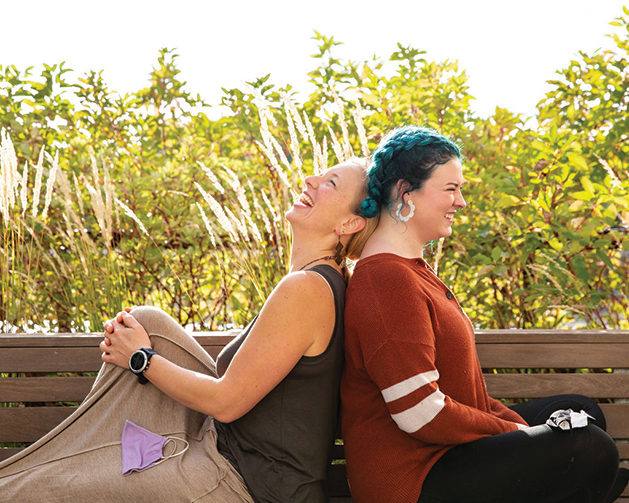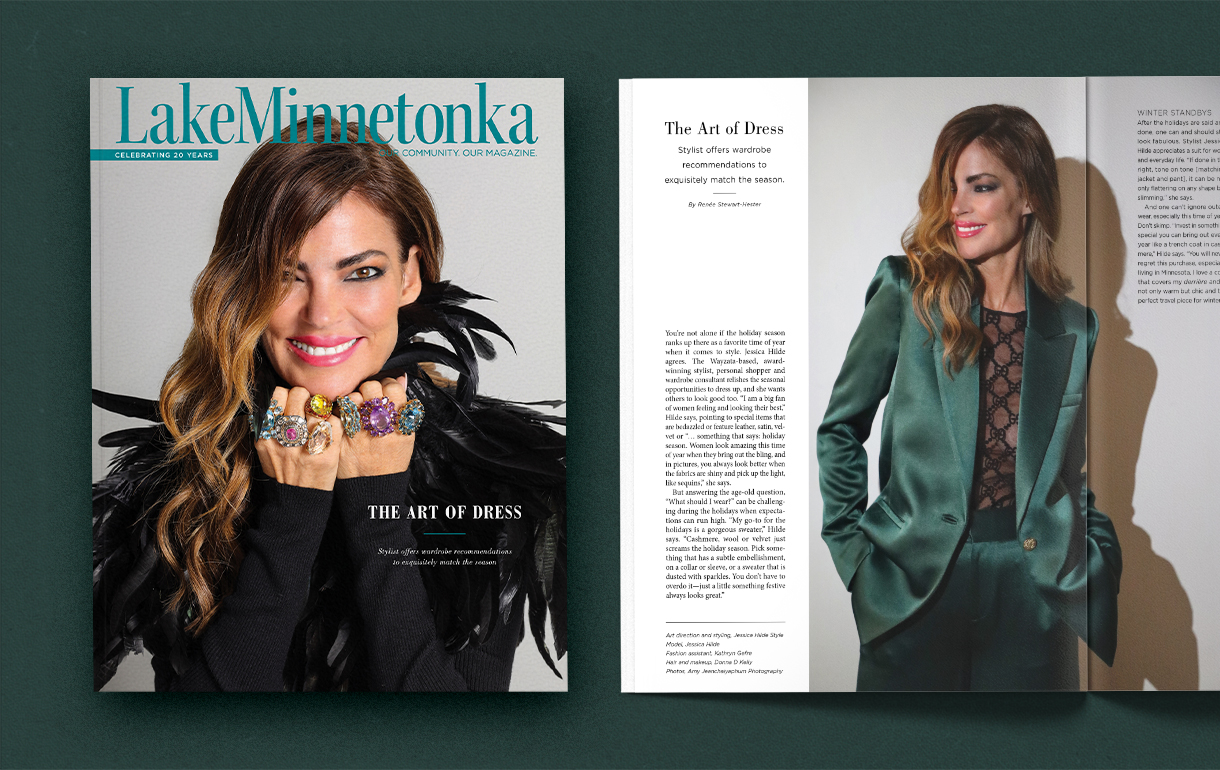
Photos: Dawn Bennett
How we heal through healthy touch.
In the wake of COVID-19, Dawn Bennett says many people have experienced a collective trauma, especially when it comes to resuming consensual touch, but she offers a remedy. “My goal is: Let’s recover from this as efficiently and as well as we can,” she says. “And that’s going to take communication. That’s going to take, ‘Do you want touch? Is it okay for me to touch you?’”
Instead of swearing off touch because we’re afraid of getting sick or because we’re afraid of offending someone, Bennett says we need to have clear communication, so that even if it’s not physical contact, we can touch other people with compassion, with, “I see you.”
Bennett, a massage therapist and founder of Red Wing-based Touch Remedies, hosts speaking engagements across the Metro, including the Lake Minnetonka area, and was inspired to write The Touch Crisis: Navigating the Tricky Terrain of Bringing Healthy Touch Back to Our Culture after a touch crisis of her own.
“My [previous] business had won the service business of the year award with the Chamber of Commerce,” Bennett says. “So, I went up on stage, and on the way back to my seat, I hugged a bunch of people because I knew a lot of people there.” A few weeks later, a woman approached Bennett on the street. “She shamed me, basically, and said, ‘The way that you were hugging in a business event was completely inappropriate. This is no place for doing that,’” she says.

While Bennett acknowledges that there was probably a reason that this woman’s reaction was so emotionally charged, the conversation nevertheless challenged Bennett to think about how she was interacting with touch. “I thought I had really clear communication, and it kind of set me back where I started exploring, you know, where are my boundaries lacking or where perhaps could I communicate more clearly,” she says.
Bennett began exploring how people give and receive consensual touch, as well as methods for creating boundaries for those who don’t want to be touched. The results of her explorations are included in her book, which provides tools and methods for people to communicate their wants, needs and boundaries.
“The phrase I use a lot in my book is, ‘Would you like,’” Bennett says. “Not, ‘Let me have a hug,’ or ‘Can I have a hug?,’ but ‘Would you like a hug?’ because that allows the other person to make the decisions. You offer up what’s on the table for you, and ask the person what they would like.”
“Reading The Touch Crisis has really helped me understand that everyone has different needs and preferences for touch and how to appropriately ask what their level of comfort is,” says Cathi Williams of Wayzata. “Especially after this last year, I learned how to ask people what kind of greeting they prefer. Some people prefer a wave or an elbow bump while others are eagerly waiting for a hug. Without this awareness in the past, I would either hold back in fear of upsetting someone or had the potential of invading someone’s space.”
Understanding people’s preferences has helped Williams on another level. “It allows me not to take it personally,” she says of when people prefer to avoid touch-based greetings. She recommends Bennett’s book for those who are interested in gaining insight on how to navigate touch in the post-pandemic world.
A New Path
Bennett began her career path centered on healthy touch through a series of healing touch courses. After a peer in her Tai Chi class told her about a group of nurses, who practiced healing touch, Bennett decided to explore it. “I started going to this healing touch group practice on Wednesdays, and I learned about how even off-the-body intentional presence and present touch can move energy through the body and create healing,” Bennett says. Following this interest, she left college at 19 to attend massage school.
After initially specializing in injury work and deep tissue massage, Bennett had a revelation that changed the course of her career. “What I realized is that so much of our emotions are trapped in tissue, as well. So it’s not just releasing the tissue in the body, it’s how do you to touch with intention to allow those emotions to release?”
This question led her to train in craniosacral and visceral massage, two forms of massage therapy that help release scar tissue along the brain, spinal cord, nervous system and abdominal organs. Even after completing training, more emotions kept coming up for Bennett, leading her down yet another path.
“I went to school to become a homeopath to work with emotions,” Bennett says. “I started doing emotional freedom techniques because I really wanted to empower people. I wanted to teach people some of what I was doing with them, so, that way, they could release their own emotions.”
Touch Remedies followed a similar path, with an initial focus on massage therapy giving way to an emphasis on body healing, which led to an emphasis that encompassed the mind, as well. “Touch is so much more than just tactile stuff,” Bennett says, continuing, “Yes, when I’m talking about my book, it’s very tactile, but it’s also ‘How do I emotionally impact another human being in a really positive way? How do I give support? How do I communicate? How do I have healthy boundaries in a way that when I’m present, they feel safe, they feel nurtured [and] they feel connected to something larger,’ right?”
The Touch Crisis: Navigating the Tricky Terrain of Bringing Healthy Touch Back to Our Culture is available through amazon.com.






















